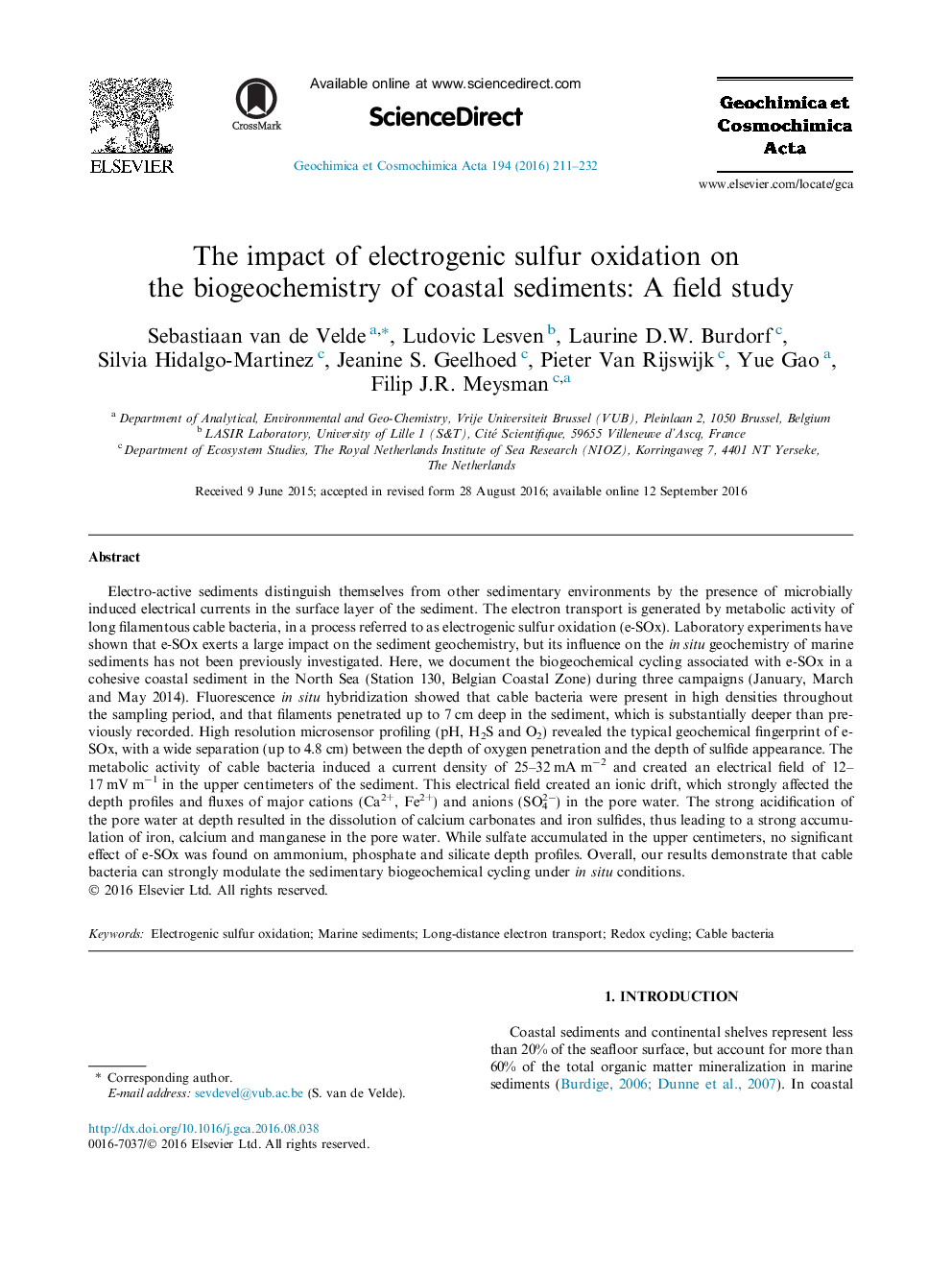| کد مقاله | کد نشریه | سال انتشار | مقاله انگلیسی | نسخه تمام متن |
|---|---|---|---|---|
| 6437162 | 1637963 | 2016 | 22 صفحه PDF | دانلود رایگان |
Electro-active sediments distinguish themselves from other sedimentary environments by the presence of microbially induced electrical currents in the surface layer of the sediment. The electron transport is generated by metabolic activity of long filamentous cable bacteria, in a process referred to as electrogenic sulfur oxidation (e-SOx). Laboratory experiments have shown that e-SOx exerts a large impact on the sediment geochemistry, but its influence on the in situ geochemistry of marine sediments has not been previously investigated. Here, we document the biogeochemical cycling associated with e-SOx in a cohesive coastal sediment in the North Sea (Station 130, Belgian Coastal Zone) during three campaigns (January, March and May 2014). Fluorescence in situ hybridization showed that cable bacteria were present in high densities throughout the sampling period, and that filaments penetrated up to 7Â cm deep in the sediment, which is substantially deeper than previously recorded. High resolution microsensor profiling (pH, H2S and O2) revealed the typical geochemical fingerprint of e-SOx, with a wide separation (up to 4.8Â cm) between the depth of oxygen penetration and the depth of sulfide appearance. The metabolic activity of cable bacteria induced a current density of 25-32Â mAÂ mâ2 and created an electrical field of 12-17Â mVÂ mâ1 in the upper centimeters of the sediment. This electrical field created an ionic drift, which strongly affected the depth profiles and fluxes of major cations (Ca2+, Fe2+) and anions (SO42â) in the pore water. The strong acidification of the pore water at depth resulted in the dissolution of calcium carbonates and iron sulfides, thus leading to a strong accumulation of iron, calcium and manganese in the pore water. While sulfate accumulated in the upper centimeters, no significant effect of e-SOx was found on ammonium, phosphate and silicate depth profiles. Overall, our results demonstrate that cable bacteria can strongly modulate the sedimentary biogeochemical cycling under in situ conditions.
Journal: Geochimica et Cosmochimica Acta - Volume 194, 1 December 2016, Pages 211-232
